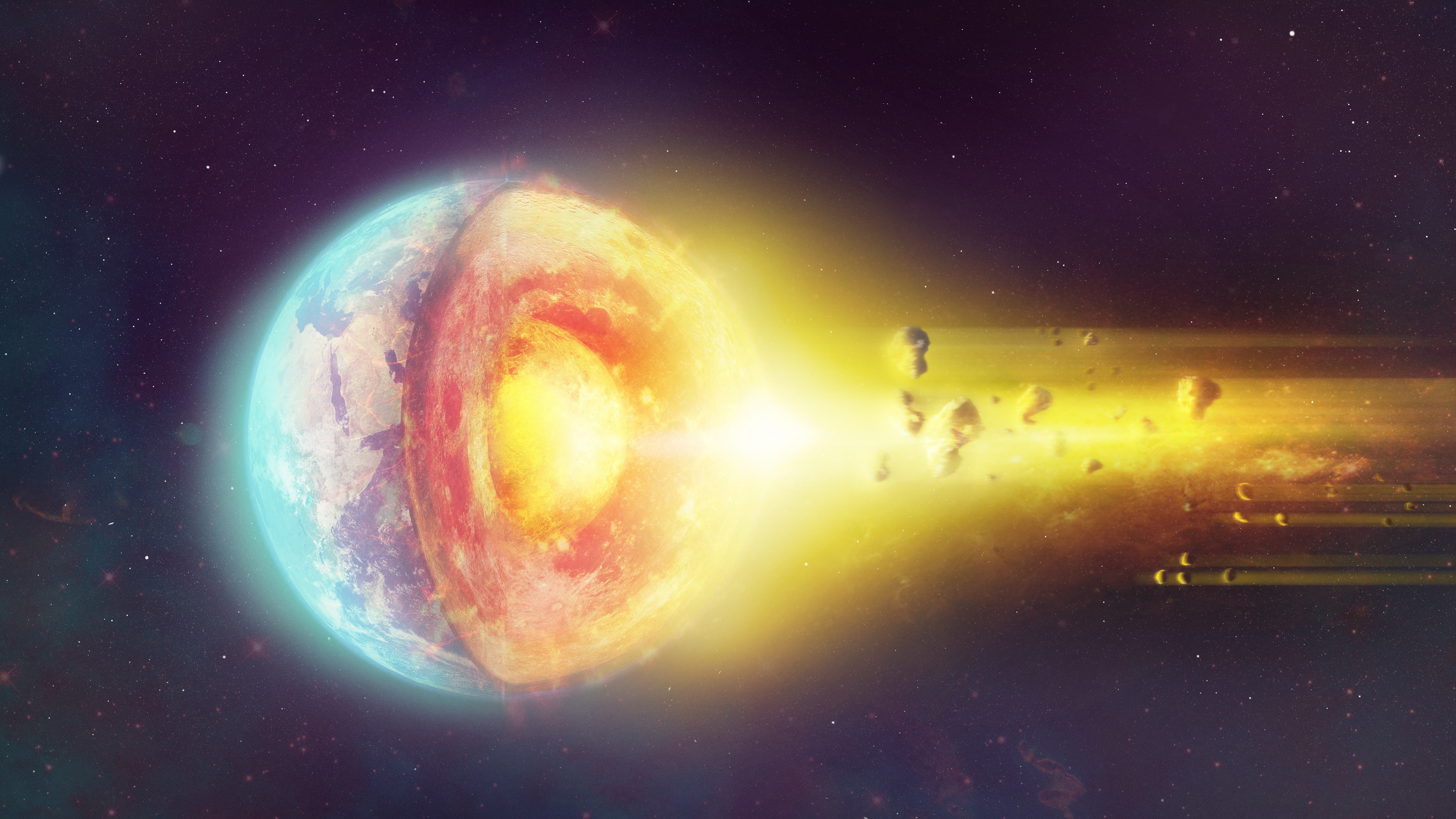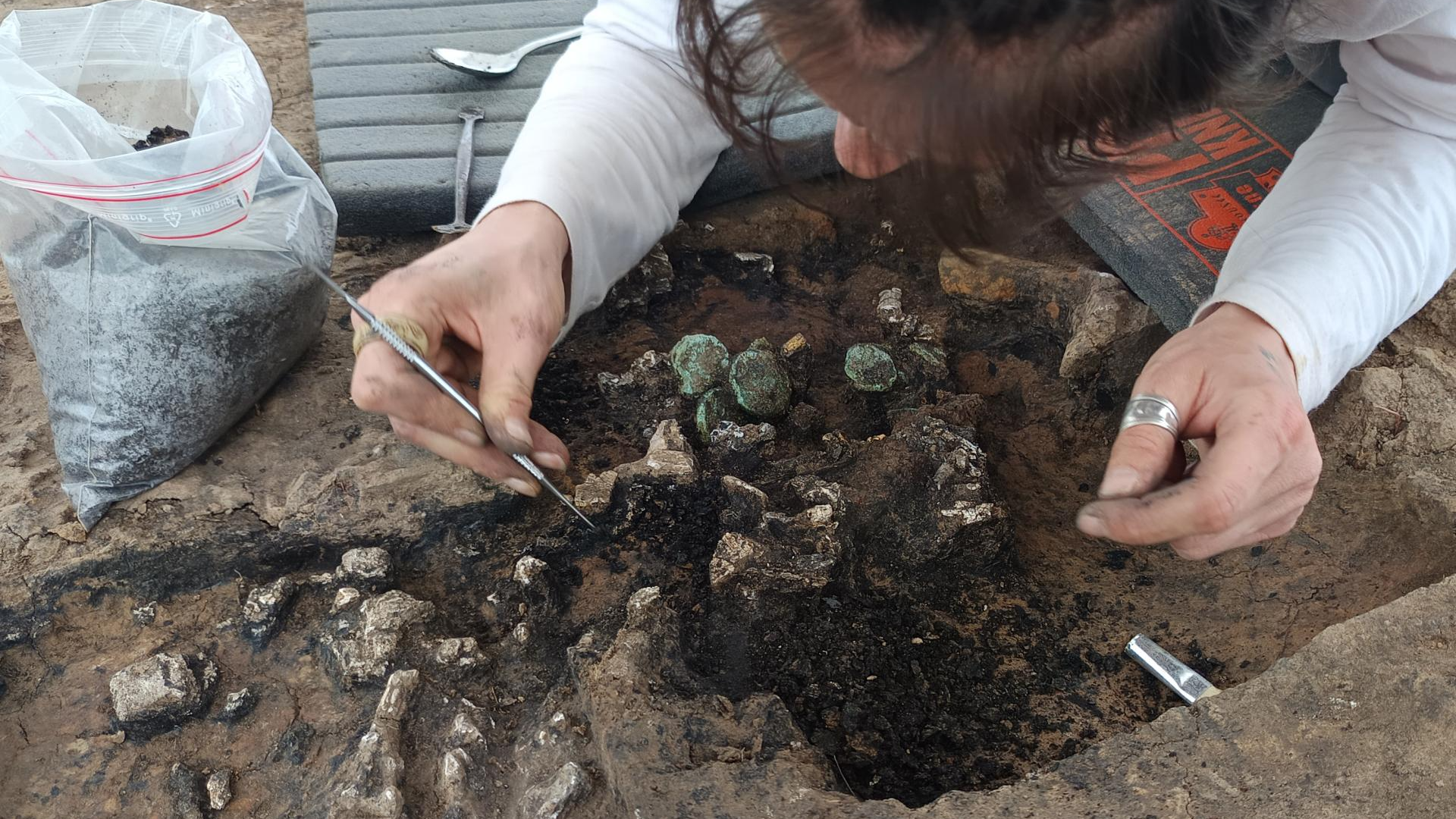Earth's core is 'leaking' gold, study finds
Our planet's core is rich in gold that can leak out into the mantle, and in some cases, end up in volcanos on the surface, according to a new study.

Researchers have found evidence that Earth's core is leaking gold and other precious metals, according to a new study.
The vast majority (99.9%) of Earth's gold and other precious metals are hidden in the center of our planet, with thousands of miles of near-impenetrable rock between us and these natural treasures. However, while humans are unlikely to ever mine Earth's core, new research indicates that some metals have migrated out of the core into enriched rocks that eventually ended up at the surface.
While investigating volcanic rocks in Hawaii, a team of scientists identified signs of the precious metal ruthenium — a platinum group metal — that they conclude could only have come from the core-mantle boundary, more than 1,800 miles (2,900 km) below the surface.
"When the first results came in, we realised that we had literally struck gold!" study first author Nils Messling, a researcher in the geochemistry department at Göttingen University in Germany, said in a statement. "Our data confirmed that material from the core, including gold and other precious metals, is leaking into the Earth's mantle above."
The researchers published their findings May 21 in the journal Nature.
Earth is made up of three basic layers: a crust, mantle and core. The crust acts like a thin outer shell, the mantle is a less rigid middle layer of rocks that makes up most of the planet, and the core is the sphere in the middle. At the core, there's a sea of molten metals about 1,400 miles (2,300 km) thick – called the outer core — swirling around a mostly solid iron ball that's about 1,520 miles (2,440 km) wide — called the inner core.
Get the world’s most fascinating discoveries delivered straight to your inbox.
Previous research has found that the make-up of Earth's Ru changed during the later stages of the planet's formation as it accumulated more material, so the Ru locked away in the core is slightly different from the Ru typically found in the mantle and crust.
For the new study, the researchers analyzed volcanic rock samples from Hawaii, including those collected at a lava lake in the active — and currently erupting — Kilauea volcano. They compared the Ru detected in these samples to Ru typically found in the mantle and found higher concentrations of the core Ru in Hawaii's volcanic rocks compared to other mantle rocks, suggesting that the Hawaii Ru originated from Earth's center.
The detection of Ru linked to the core demonstrates that precious metals, including gold, can move out of the center of the Earth. That means some of these precious metals we mine today may have originally come from the core. The study also tells scientists something about the formation of Hawaii and other regions tied to the core-mantle boundary.
"Our findings not only show that the Earth's core is not as isolated as previously assumed," study co-author Matthias Willbold, a professor in the geochemistry department at Göttingen University, said in the statement. "We can now also prove that huge volumes of super-heated mantle material — several hundreds of quadrillion metric tonnes of rock — originate at the core-mantle boundary and rise to the Earth's surface to form ocean islands like Hawaii."
Hawaii is thought to be sitting on a deep mantle plume of hot rock, driving volcanic activity in the region. Researchers recently found new evidence that Africa is being torn apart by another deep mantle plume, which also probably originated from the core-mantle boundary, like the ruthenium.

Patrick Pester is the trending news writer at Live Science. His work has appeared on other science websites, such as BBC Science Focus and Scientific American. Patrick retrained as a journalist after spending his early career working in zoos and wildlife conservation. He was awarded the Master's Excellence Scholarship to study at Cardiff University where he completed a master's degree in international journalism. He also has a second master's degree in biodiversity, evolution and conservation in action from Middlesex University London. When he isn't writing news, Patrick investigates the sale of human remains.
You must confirm your public display name before commenting
Please logout and then login again, you will then be prompted to enter your display name.
